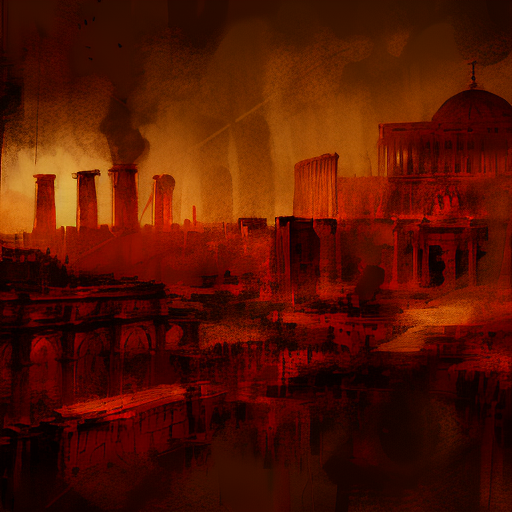Rome: A Journey Through Time
Rome is a captivating city that has stood the test of time, with a rich history spanning over two millennia. From its legendary founding to its rise as the center of one of the greatest empires in history, Rome has left an indelible mark on the world. In this book, “Rome: A Journey Through Time,” author explores the city’s fascinating past, its iconic landmarks, and the enduring legacy of the Eternal City.
The Birth of Rome: Myth and History
The story of Rome begins with a blend of myth and history. According to legend, the city was founded in 753 BC by the twin brothers Romulus and Remus, who were raised by a she-wolf. As the brothers grew, they quarreled over the location of their new city, resulting in Romulus killing Remus and becoming the first king of Rome. While the tale may be steeped in mythology, archaeological evidence suggests that Rome was indeed settled in the 8th century BC.
Rome: The Rise of an Empire
Rome’s rise to power was swift and extraordinary. From a small city-state, it expanded its influence through military conquests and strategic alliances. The Roman Republic, established in 509 BC, saw the rise of a democratic government and the development of a legal system that would shape Western civilization. However, internal conflicts and power struggles eventually led to the decline of the Republic and the rise of the Roman Empire under the rule of Julius Caesar.
Under the emperors, Rome reached the pinnacle of its power and influence. The empire stretched from Britain in the west to Egypt in the east, encompassing diverse cultures and peoples. The emperors built magnificent structures, such as the Colosseum and the Pantheon, which still stand as testaments to Rome’s architectural prowess. The city became a hub of trade, culture, and intellectual pursuits, attracting scholars, artists, and philosophers from all corners of the empire.
Rome: The Fall and Legacy
Despite its grandeur, Rome eventually faced internal decay and external threats that led to its downfall. The empire became too vast to govern effectively, and corruption and economic instability plagued the city. Barbarian invasions, such as those by the Visigoths and Vandals, further weakened Rome’s defenses. In 476 AD, the last Roman emperor was overthrown, marking the end of the Western Roman Empire.
While Rome may have fallen, its legacy endured. The city’s influence can be seen in various aspects of modern society, including law, architecture, language, and government. Roman engineering feats, such as aqueducts and roads, revolutionized infrastructure and transportation. The Latin language, the precursor to modern Romance languages, continues to shape communication. The Catholic Church, with its headquarters in Vatican City, is a direct descendant of the Roman Empire’s adoption of Christianity.
Key Takeaways:
- Rome was founded in 753 BC according to legend, but archaeological evidence suggests it was settled in the 8th century BC.
- The Roman Republic established democratic government and a legal system that influenced Western civilization.
- The Roman Empire reached its peak under the emperors, expanding its influence through military conquests.
- Rome’s decline was due to internal decay, external threats, and barbarian invasions.
- Rome’s legacy can be seen in modern society through its influence on law, architecture, language, and government.
“Rome wasn’t built in a day, but it has left an everlasting mark on the world.”
Rome, with its captivating history and enduring legacy, continues to fascinate visitors from around the globe. Its ancient ruins, such as the Roman Forum and the Baths of Caracalla, offer glimpses into the city’s glorious past. The Vatican City, with its magnificent St. Peter’s Basilica and the Sistine Chapel, showcases the influence of the Catholic Church. Rome truly is a city that has stood the test of time, a testament to the power and grandeur of one of the greatest civilizations in history.












